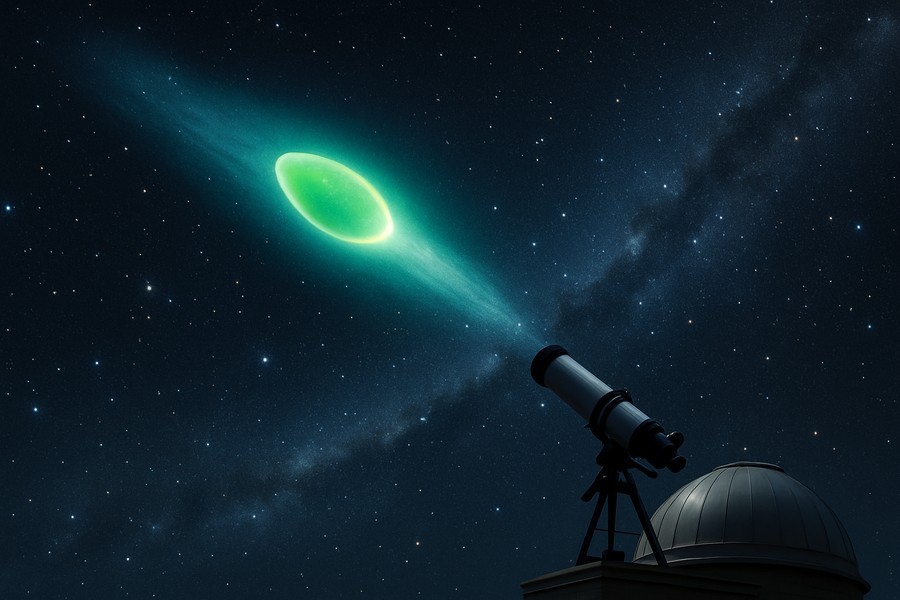
An Intriguing Space Wanderer: Unraveling the Secrets of a Unique Comet
Our universe never ceases to amaze us with its infinite mysteries. One such marvel is the comet from another star system, 3I/ATLAS, which has been the subject of intense study since its detection. Stranger and more intriguing than any other, this comet is providing scientists with invaluable insights about its origins and the universe beyond our solar system.
A Glimpse into the Unseen
3I/ATLAS is only the third interstellar object ever discovered. Originating from star systems outside our own, these celestial bodies serve as cosmic messengers, offering us a glimpse into the conditions and processes that shape distant star systems. The study of this comet has already unveiled remarkable details about its characteristics and journey.
Unusual Characteristics Emerge
Recent observations have revealed some of the comet's most distinctive features. The majority of comets are known to have comas (the cloud of gas and dust that surrounds the nucleus) dominated by water. However, the coma of 3I/ATLAS is abundant with carbon dioxide. This unusual composition could mean that the comet's nucleus is inherently rich in carbon dioxide, indicating that it might have formed in an environment with higher radiation levels than our solar system.
Clues to Formation
Another possibility is that the carbon dioxide-heavy coma suggests the comet formed near the CO2 ice line within the protoplanetary disk of its parent star. This is the distance where the temperature drops enough for carbon dioxide gas to crystallize into ice. Furthermore, the scarcity of water in the coma hints at unusual surface properties, or perhaps a protective crust, that may obstruct heat from reaching the comet's icy core.
A Comet Like No Other
These fascinating revelations imply that 3I/ATLAS was created under conditions vastly different from those in our section of the galaxy. It adds to its growing list of unique characteristics, setting it apart from any other known comet. Earlier studies even suggested that 3I/ATLAS might be the oldest interstellar comet ever discovered, possibly older than our solar system itself. Its trajectory also points to its origin from an old, low-metallicity star system in the Milky Way's "thick disk", an area that comprises 10% of the galaxy's total stellar mass.
The Journey of Discovery Continues
While we have learned much about 3I/ATLAS, this is merely the beginning of our exploration. Scientists expect the comet to remain observable until mid-2026, offering ample opportunities for further research. As we continue to gather more data on this interstellar object, we inch closer to unlocking the secrets of its origin and enhancing our understanding of the vast universe.
